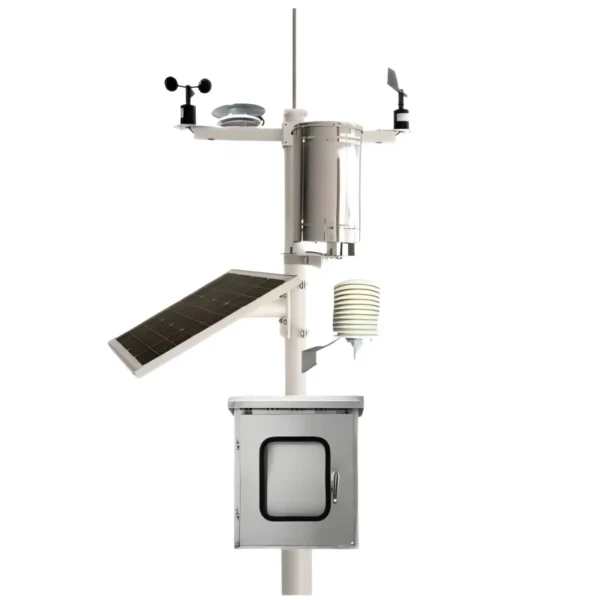
Automatic Weather Station: Definition and Functionality

# Automatic Weather Station: Definition and Functionality
An Automatic Weather Station (AWS) is a sophisticated system designed to collect and record meteorological data without the need for constant human intervention. These stations are widely used in various fields, including agriculture, aviation, environmental monitoring, and climate research. By providing real-time and accurate weather information, AWS plays a crucial role in decision-making processes and forecasting.
## What is an Automatic Weather Station?
An Automatic Weather Station is a network of sensors and instruments that measure atmospheric conditions such as temperature, humidity, wind speed, wind direction, rainfall, and barometric pressure. The data collected by these sensors is transmitted to a central processing unit, which then processes and stores the information. Some advanced AWS systems are equipped with solar panels to ensure continuous operation, even in remote locations.
### Key Components of an Automatic Weather Station
An AWS typically consists of the following components:
– Sensors: These are the primary devices that measure various weather parameters. Common sensors include thermometers, hygrometers, anemometers, rain gauges, and barometers.
– Data Logger: This component records the data collected by the sensors. It is often equipped with memory storage to retain data over extended periods.
– Communication Module: This module transmits the collected data to a central server or cloud-based platform. It can use various communication methods, including cellular networks, satellite links, or radio frequencies.
– Power Supply: Most AWS systems are powered by batteries, often supplemented by solar panels to ensure uninterrupted operation.
## Functionality of an Automatic Weather Station
The primary function of an Automatic Weather Station is to provide accurate and timely weather data. This data is essential for various applications:
– Weather Forecasting: AWS data is used by meteorologists to predict weather patterns and issue warnings for severe weather conditions.
– Agriculture: Farmers rely on AWS data to make informed decisions about planting, irrigation, and harvesting. Accurate weather information helps optimize crop yields and reduce risks.
– Aviation: Airports use AWS to monitor weather conditions, ensuring the safety of flights and efficient airport operations.
– Environmental Monitoring: AWS systems are deployed in remote areas to monitor climate change, track pollution levels, and study ecosystems.
### Advantages of Automatic Weather Stations
Automatic Weather Stations offer several advantages over traditional manual weather observation methods:
– Accuracy: AWS systems provide highly accurate and consistent data, reducing the risk of human error.
– Real-Time Data: The ability to transmit data in real-time allows for immediate analysis and response to changing weather conditions.
– Cost-Effective: Once installed, AWS systems require minimal maintenance and can operate autonomously, reducing labor costs.
– Scalability: AWS networks can be expanded easily by adding more stations, providing comprehensive coverage over large areas.
In conclusion, Automatic Weather Stations are indispensable tools in modern meteorology and environmental science. Their ability to provide accurate, real-time weather data makes them essential for a wide range of applications, from agriculture to aviation. As technology continues to advance, AWS systems will become even more sophisticated, further enhancing their functionality and reliability.
Keyword: what is automatic weather station